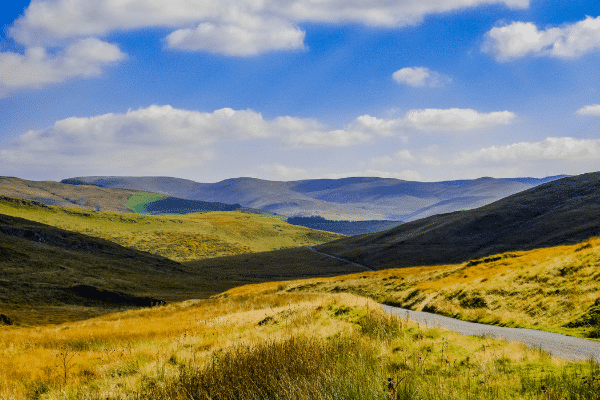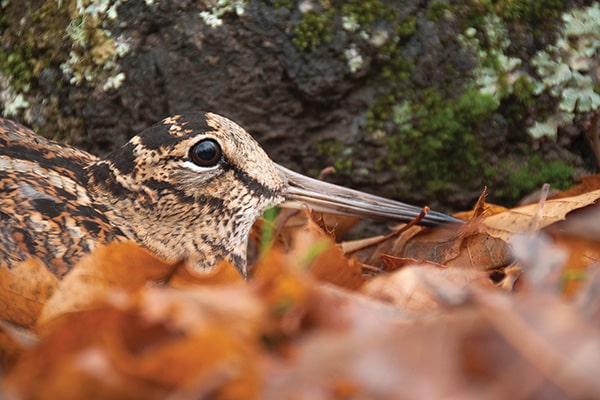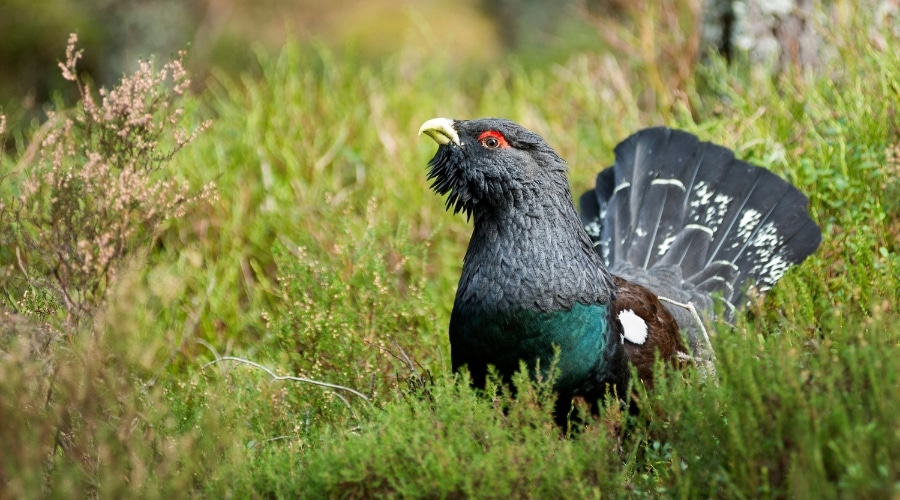
Shooting deserves recognition
BASC has called on Natural Resources Wales to utilise the significant benefits already implemented by shooting activities in their future conservation plans
Get information on the legal shooting season for mammals and birds in the UK.
Learn about our current conservation projects and how you can get involved.
Comprehensive information and advice from our specialist firearms team.
Everything you need to know about shotgun, rifle and airgun ammunition.
Find our up-to-date information, advice and links to government resources.
Everything you need to know on firearms law and licensing.
All the latest news and advice on general licences and how they affect you.


The passion for woodcock runs deep in the shooting community. So many do so much to support the iconic wader – but what are the key boxes we must tick to give the species a helping hand? Kiri Thompson takes a closer look.
Woodcock are small wading birds with short legs and long, slender beaks. Sometimes referred to as the ‘snipe of the woods’, they rely on deciduous or mixed woodland containing clearings, glades or rides. They are largely nocturnal, spending this time foraging for creatures such as worms, beetles, spiders, caterpillars and small snails.
Woodcock numbers in the UK consist of a small resident breeding population – last estimated in 2013 to consist of 55,000 males – and roughly 1.4 million migratory birds that arrive in winter from the likes of Scandinavia, Finland, the Baltic States and Russia.
On a global scale, the woodcock is classified a species of ‘least concern’ on the International Union for Conservation of Nature (IUCN) red list, with a stable population trend. However, resident UK populations of this bird are in decline and its breeding range is shrinking. In 2015, the woodcock was moved from the amber list to the red list of the Birds of Conservation Concern, due to the contraction in breeding range. Reasons for decline include increased fragmentation of woodlands, changing woodland practices causing lower woodland diversity, and higher levels of predation and disturbance.
The shooting of woodcock is currently under close scrutiny, with calls from some quarters to shorten the shooting season or remove the bird from the quarry list altogether. BASC has robustly challenged these calls, as there is no evidence that shooting is responsible for the decline in woodcock numbers. Moreover, a ban on woodcock shooting could in fact be counterproductive, as it would remove the incentive to actively manage the woodland habitats woodcock rely on, control predators, and minimise disturbance during breeding months.
The passion for woodcock runs deep in the shooting community. Some people won’t shoot them at all, others will. It is, however, important that we do all we can to help conserve this iconic bird.

Over 500,000ha of woodland and 100,000ha of copses are currently managed for game shooting in the UK. So how can those within the shooting community who own or manage woodland help ensure they are ticking the right boxes for woodcock?
Areas where trees and shrubs are present but do not form a closed canopy let more sunlight reach the woodland floor and allow other plant species to grow, creating a mix of habitats and a diverse woodland structure. Open spaces can be created through active management such as felling and thinning, coppicing, or establishing rides (open corridors through the woodland) and glades (isolated areas within the woodland).
Open spaces are important for woodcock, as they use rides and glades for daytime roosting and nesting, and open spaces for display, courtship, and foraging. Including open spaces, rides and glades in your woodland will also benefit other plants and animals including gamebirds.
Woodcock seem to do best in large, well-connected and diverse areas of wet woodland. Research by the Game & Wildlife Conservation Trust (GWCT) indicates that woodcock need a woodland habitat containing a mix of different tree types of varying ages and heights. A woodland with a variety of species will also be more resilient to diseases and pests and better for other plants and animals.
As one of the pressures facing woodcock is woodland fragmentation, improving woodland connectivity on your land by restoring and maintaining nearby hedgerows, or planting trees on small strips of land, will greatly help these birds and other wildlife.
Herbivores such as deer, squirrels and smaller mammals can damage trees and prevent natural regeneration and regrowth.
A bare woodland floor absent of cover and regeneration has limited value to woodcock. Effective, targeted herbivore management – think culling, and tree protection through use of fencing, tree tubes and guards – can help reduce this damage.
Offer additional foraging opportunities
As well as woodlands, woodcock need open fields to forage in, especially during the winter months. Earthworms are the woodcock’s main source of food and can be encouraged by keeping soils moist but sufficiently well-drained to prevent flooding. Woodcock also require the ground to be wet enough so they can probe into the soil with their long beaks to find food.
Other ways to encourage earthworms include leaving areas of grassland uncultivated, ensuring the soil pH is above 4.5, and reducing the use of certain pesticides and fungicides.
As ground-nesting and foraging birds, woodcock are vulnerable to predation, most notably by foxes. Studies have shown that controlling predators such as foxes and carrion crows can lead to an increase in breeding success of ground-nesting birds. Therefore, the importance of protecting woodcock from predation cannot be overlooked. Effective ways to control foxes include night shooting and snaring. Further information about both control methods can be found on the BASC website.
Minimising human disturbances during the woodcock breeding season (March – June) and when they are rearing young, is key to ensuring successful nesting attempts and survival of fledglings.
Simple steps, such as keeping dogs on a lead when visiting woodlands and suspending woodland management tasks – especially ones involving the use of machinery – during these periods, will ensure disturbances are reduced. Additional signage to encourage members of the public to stick to footpaths is also worth thinking about.
Responsible shooting
It is important that any shooting of the species is sustainable. The GWCT has produced the following advice – much of which is underpinned by science – for shooting woodcock:
Further information can be found on both the BASC and GWCT websites.
As advised by the GWCT, it is important to gain an understanding of your local woodcock population to ensure shooting remains responsible and sustainable.
Woodcock numbers can be assessed by recording sightings on shoot days, observing flightlines, listening for audible calls, and counting at night. You can report data on any woodcock that has been shot using BASC’s Green Shoots Mapping tool on the BASC website.
Although woodcock are covered by various bird surveys, their secretive nature means they are often under-recorded. The British Trust for Ornithology (BTO) and GWCT run a dedicated survey to estimate the range and population of breeding woodcock. To take part you must conduct four dusk visits between April and the end of June and note down how many times you see woodcock during their breeding display flights. The survey is run once every ten years and next occurs this year – 2023. The shooting community can help gather the most accurate estimates by taking part. Further information can be found on the BTO website: bto.org/our-science/projects/woodcock-survey.
Ultimately, actively maintaining vital habitats, managing predators, minimising disturbance, ensuring responsible shooting, and taking part in research and monitoring counts of woodcock, are all essential if we are to help this wonderful bird. We all want to ensure the health of both residing and visiting woodcock – and if we want future generations to enjoy this bird and shooters to enjoy a sustainable harvest, then we must do our bit and be seen doing so in the public domain.

BASC has called on Natural Resources Wales to utilise the significant benefits already implemented by shooting activities in their future conservation plans

A decision by the Scottish government to ban snares would be catastrophic to threatened bird species, including the iconic capercaillie.
BASC visited Reaseheath College to teach students about installing duck nest tubes, which can increase mallard breeding success rates to 97 per cent.
Sign up to our weekly newsletter and get all the latest updates straight to your inbox.
© 2023 British Association for Shooting and Conservation. Registered Office: Marford Mill, Rossett, Wrexham, LL12 0HL – Registered Society No: 28488R. BASC is a trading name of the British Association for Shooting and Conservation Limited which is authorised and regulated by the Financial Conduct Authority (FCA) under firm reference number 311937.
If you have any questions or complaints about your BASC membership insurance cover, please email us. More information about resolving complaints can be found on the FCA website or on the EU ODR platform.
This website uses cookies so that we can provide you with the best user experience possible. Cookie information is stored in your browser and performs functions such as recognising you when you return to our website and helping our team to understand which sections of the website you find most interesting and useful.
Strictly Necessary Cookie should be enabled at all times so that we can save your preferences for cookie settings.
If you disable this cookie, we will not be able to save your preferences. This means that every time you visit this website you will need to enable or disable cookies again.
This website uses Google Analytics to collect anonymous information such as the number of visitors to the site, and the most popular pages.
Keeping this cookie enabled helps us to improve our website.
Please enable Strictly Necessary Cookies first so that we can save your preferences!
More information about our Cookie Policy